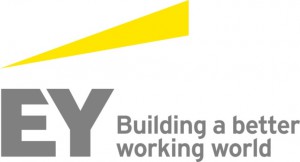TopQuants – Newsletter – Volume 1 – Issue 2
Dear Reader,
The TopQuants team is pleased to present the second issue of our newsletter. The inaugural issue, published in March 2013 was very well received among the quant audience and had generated many positive feedbacks. The intention behind the newsletter is to stay in touch with the quant community in between our two events,
namely the spring keynote and the autumn/winter workshops and, to provide an alternative forum for people to express themselves. TopQuants will continue to publish the newsletter semi-annually from now onwards and as with all our efforts, it is
intended to serve the quantitative community in the Netherlands.
TopQuants have witnessed an increased number of submissions for the current newsletter issue and we hope the enthusiasm continues. We will strive to maintain the quality of the technical contents in the newsletter and ensure that it is relevant and beneficial to the quantitative community. As always, we are open to your suggestions, and are looking forward to receiving your comments and contributions. TopQuants is very open to the nature of submissions in our newsletter which may include technical articles, research results from masters/PhD work, personal blogs, surveys, opinions (e.g. on newly proposed regulations), reviews of books or articles, coverage of interesting events etc. If there is a topic you would like to bring to the attention of your fellow quants in this country, why not write an article about it for this newsletter? We encourage you to contact us to discuss how it may be done.
This issue of the newsletter starts with a brief coverage of the TopQuants spring event in May 2013, held at the SNS Reaal headquarters in Utrecht. The summary includes the interesting presentation by our key note speaker Coen Teulings (professor at
the University of Amsterdam) who had expressed his views on the state of the Dutch economy and the possible ways going forward. Also find in the summary, a note on the lively panel discussion hosted by TopQuants committee member Bert-Jan Nauta, that included speakers, Sandra Muijs (Head of Model Development at SNS REAAL), Robert Daniels (Senior Client Risk Manager at Cardano), David Schrager (Head of Single Premium Variable Annuity Trading at ING bank) and Coen Teulings himself.
This issue also features five articles with each one being diverse from the others with regard to the technical content and background of the authors. In the first article, Danny Dieleman (Credit Risk manager at ING Bank N.V. ) and Onno Steins (Advisor Prudential Regulation at the Dutch Banking Association) jointly discuss the consultation paper ‘Revisions to the Basel Securitisation Framework’ that was issued by the Basel
Committee on Banking Supervision in December 2012. The second article is by Marco van der Burgt (ING Bank, Market RiskManagement, Model Validation) who presents a potential investment strategy that can be adopted by pension funds to prevent underfunding.
The next two articles present the internship work of Joris Chau and Toni Budimir done respectively at the Financial Services Risk department at Ernst & Young and the Group Risk Analytics, Quantitative Review team at Royal Bank of Scotland. The work of Joris Chau focuses on obtaining robust estimates of the operational risk regulatory capital charge (Value-at-Risk or VaR) via the Loss Distribution Approach while the work of Toni Budimir focussed on an alternate way to obtain haircuts for collateral
securities via bond simulations as compared to the regulatory proposed haircuts. The final article provides a brief introduction to the Econometrics Game event that is organized annually by the study association for Actuarial Science, Econometrics & Operational Research (VSAE) at the University of Amsterdam. The event has participants (econometrics masters/PhD students) from prestigious international universities covering all over the world. The article includes in particular, the case
study presented by the 2013 Econometrics Game winning team from Universidad Carlos III de Madrid, Spain, which had Guillermo Carlomagno, Andrés García Suaza, Salvatore Lobello, Michelle Sánchez, Pedro Sant’ Anna as its members. Their work was about forecasting the GDP growth of Spain in a datarich environment.
We hope you will enjoy reading the broad range of topics offered in this newsletter and we look forward to seeing you at the upcoming TopQuants event(s).
On behalf of TopQuants,
Aneesh Venkatraman
Events
-
Autumn Event 2023
-
College Tour for Professionals, Vol 4
-
Spring Event 2023
-
Young Quant Finance Professionals Symposium 2023
-
Autumn Event 2022
-
Spring Event 2022
-
Spring Event 2021
-
Autumn Event 2020
-
Spring Event 2020
-
End of LIBOR Breakfast Workshop
-
Autumn Event 2019
-
Benchmark reform breakfast seminar
-
College Tour on Data Analytics for Professionals, Vol 3
-
Spring Event 2019
-
Validation of Machine Learning Models
-
Python breakfast seminar
-
College Tour on Data Analytics for Professionals, Vol 2
-
Autumn Event 2018
-
Quant Careers 2018
-
College Tour on Data Analytics for Professionals
-
Spring Event 2018
-
Autumn Event 2017
-
Quant Careers 2017
-
Spring Event 2017
-
Autumn Event 2016
-
Quant Careers 2016
-
Spring Event 2016
-
Boom Bust Boom
-
Autumn Event 2015
-
Quant Careers 2015
-
Spring Event 2015
-
Autumn Event 2014
-
Quant Careers 2014
News
-
European Best Quant Finance Thesis Award 2024
TopQuants in cooperation with Quants.NL and EY announce the 10th anniversary edition of the EUROPEAN BEST QUANT FINANCE THESIS AWARD Call — Read more
-
Educate yourself in Market Microstructure – Part Two
Explore the transformation of financial markets from human-driven trading to a complex electronic landscape dominated by algorithms and quantitative analysis. — Read more
-
International Conference on Computational Finance – ICCF24 – 2-5 April 2024- CWI, Amsterdam,
Registration is now open, see https://www.iccf24.nl/registration/ The International Conferences on Computational Finance (ICCF) represents the evolving landscape of finance and — Read more
